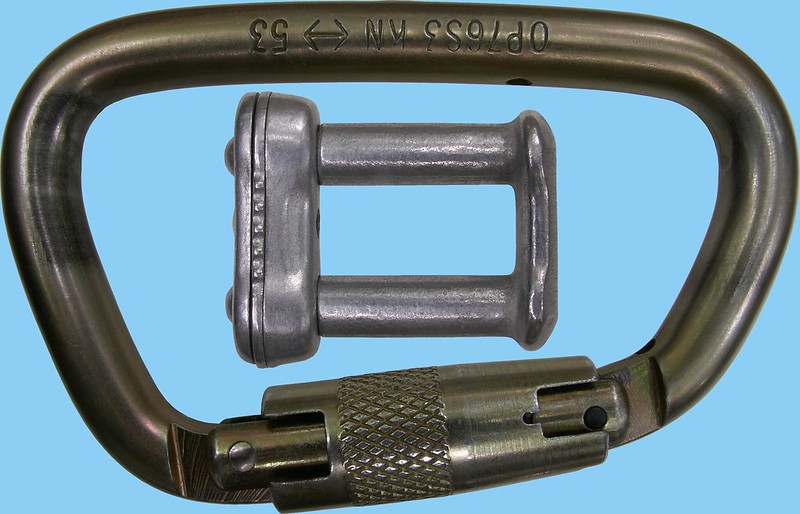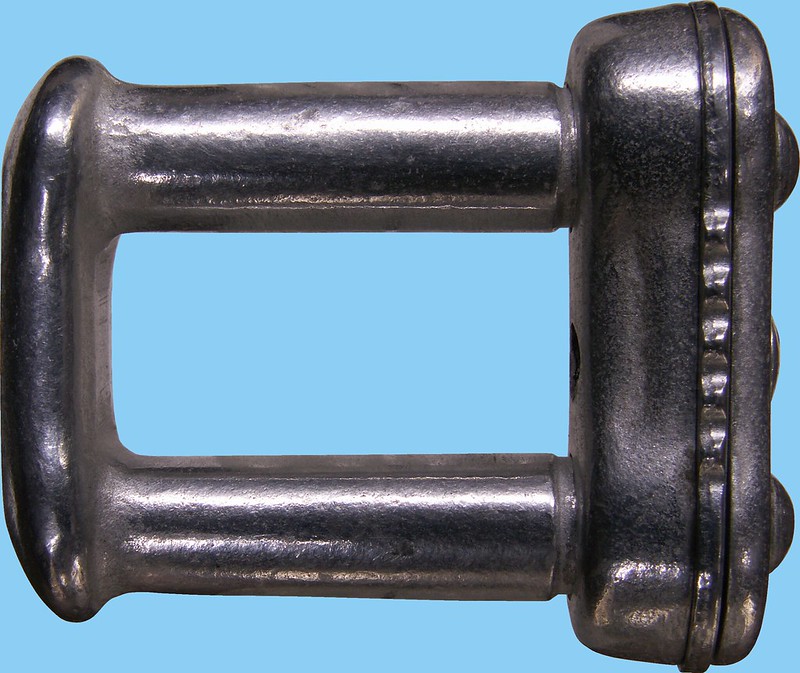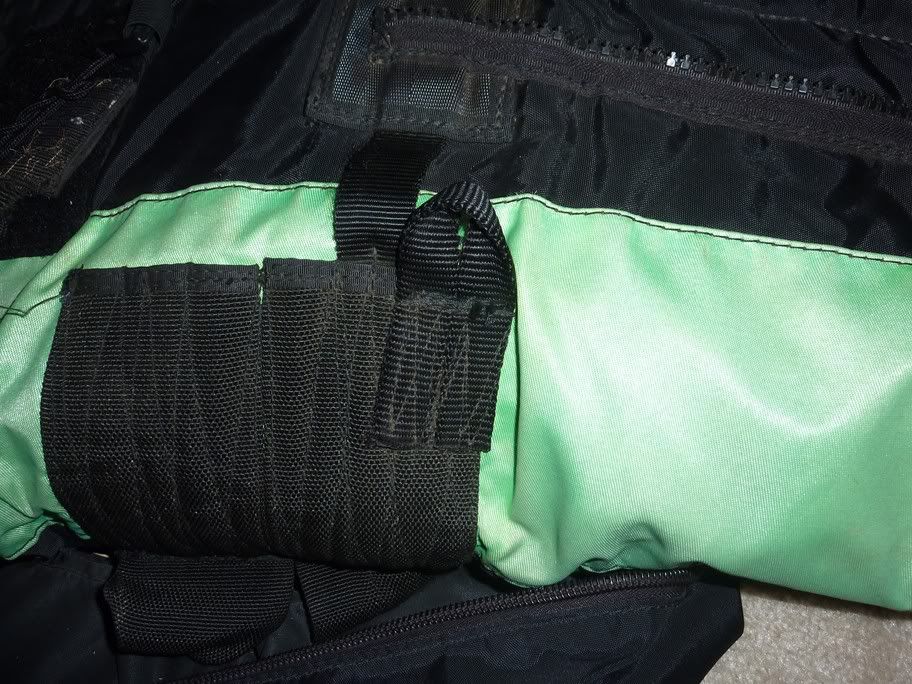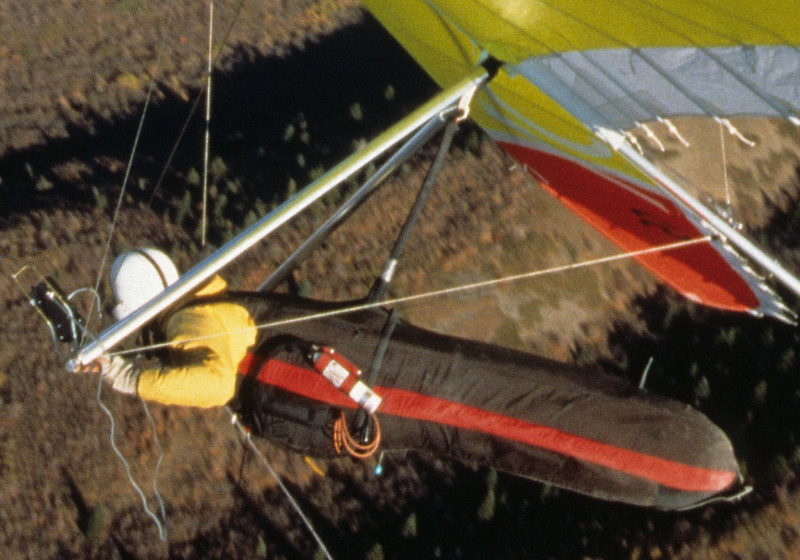Henry Wise supported the ban so it's highly unlikely he'll ever come around here to attempt to bolster his statements.
Charles Schneider understood and supported the principles and value of First Amendment freedoms and will hopefully show up for some more constructive dialogue.
So anyway...
Henry,
http://groups.yahoo.com/group/hhpa/message/11613
Safety - Hook-in Incident
No, what I said was that a locking mechanism on a carabiner does absolutely nothing to enhance the safety of a suspension system and, in fact, actually makes it more dangerous.Henry Wise - 2010/11/10 15:13:31
I had a chance to look at Tad's paper on hooking in that he posted last time. While there are many good points, my impression is that he's about 25 years in the past on at least one very important item. He says locking carabiners can't be relied upon to ensure that you're hooked in.
I wish. I am quite aware that just about everyone is using absurdly overbuilt locking steel carabiners.I believe his article is written from the point of view that we're still using non-locking carabiners.
Oh yeah?First he talks about taking off when the hang strap is half in and half out of the carabiner (resting on top of the gate). This can only happen if you're not using a locking carabiner.
It can only not happen with a locking carabiner if you actually lock the carabiner. It can much more easily not happen on a locking - or nonlocking - carabiner if you listen for the click and/or look at the connection.Doug Hildreth - 1991/08
1991/05/17 - Lynn Smith - 37 - Novice - 70 flights, 11 mountain flights - Pacific Windcraft Vision - Lookout Mountain
After two prior flights that day, the pilot returned for his 12th flight at this site. Winds were light. The pilot hooked in and did a hang check. The straps were not straight, so he unhooked, straightened them and rehooked. Reportedly a least three different hang checks were done with at least one unhook. The pilot launched, popped the nose slightly, dove to recover, and about halfway through the pullout, after about ten seconds of flight, the pilot fell from the glider. Fall was over 100 feet. He was killed on impact, with major head, face, and chest injuries. The carabiner was found intact and functional. The gate was not locked. Both hang straps on the glider were normal.
But a nonlocking carabiner can snap shut if something like the hang strap is in the way?A locking carabiner can't lock if something like the hang strap is in the way.
As opposed to a nonlocking carabiner which will?Once the locking carabiner is locked, it's not going to open on it's own.
Right. 'Cause of the huge problem we were having previously with nonlocking carabiners opening up in flight and allowing the pilot to disconnect.That's why everyone went to them in the first place.
Let's see...The only exception to this would be if you're in a situation where you don't lock your carabiner, which should only be over water.
You need to use:
- a locked carabiner over land so you won't fall out of your glider
- an unlocked carabiner over water so you won't drown.
At what altitude does the type of surface you slam into make no difference whatsoever? Wanna call it two hundred feet?
So if you're flying over water with an unlocked carabiner do you hafta stay below a hundred feet to give yourself a better chance of survival WHEN (not if - WHEN) your carabiner opens up and spits you out?
Whereas if you're using a locking carabiner on a ramp in the desert four hundred feet over the jagged rocks you should assume you're hooked in, skip the precursory check, and start running - just like everyone does at Packsaddle, Hearne, and the Barker Dam?In that case, you should make a precursory check just prior to running.
Can you either cite an incident or simulate such a failure - without resorting to power tools?There have been cases where the carabiner unhooked by itself after a hang check, but those were in the days of the non-locking carabiner use.
Charles,
I took a look at a Black Diamond nonlocking oval ALUMINUM carabiner. It's rated for eighteen kiloNewtons major axis, seven minor. For a 250 pound hook-in weight that's over six Gs. That's about twice what you need to pull a loop and about the point at which you need to start worrying about your glider breaking up. Is that your definition of "not very strong at all"?Charles Schneider - 2010/11/11 10:39:38
There is one important thing to remember about carabiners. They are strong when pulled from either end length wise. However, if the stress is appied across the width of the biner they are not very strong at all. The only strength left in them at that point is a couple small pins.
Get a needle and some dental floss and stitch the eye of the harness suspension closed to the point at which installing the carabiner starts becoming a pain in the ass. It'll never accidentally rotate minor axis after that.That is why some sort of retention device (a rubber band cut from bicycle tubing) aroung the biner to hold the hang strap of your hang glider securely in the bottom of the biner is a very good idea. This greatly increases the odds that the biner will pull from end to end, not across the gate.
- When was the last time time you saw an aluminum carabiner connecting anyone to a glider?Another potentially serious problem is that many setups only use the biner to attach the glider hang loop, the harness hang loop and the parachute hang loop. Therefore, if the biner breaks (which they do) you will not only be detached from your glider, you will also be detached from your parachute.
- Back it the days when everyone and his dog WERE using aluminum carabiners what was the ratio of carabiner to sidewire failure?
- Steel carabiners DO NOT FAIL in hang gliding operations - major or minor axis - locked or un - open or closed - EVER - PERIOD.
Most folk who fly hang gliders are idiots who have no business modifying critical systems they don't have a snowball's chance in hell of understanding.Some folks use two biners or a biner and a metal weak link to separately attach the chute bridal. The problem with this is that you have now given the main biner something hard to bend across and break.
How many keels are we hanging from, what are they made of, and at what percentage of the strength of the carabiner do you think they're gonna fold in half?One last note, climbers hate to hang from one biner. Only the fact that the biners we now use for HG are Steel makes this palatable at all.
Henry,
- Tad's article was written for USHGA's useless magazine so Tad tried to keep it relatively short and didn't go into a lot of detail on issues of no practical concern.Henry Wise - 2010/11/11 14:17:38
Tad's article didn't address that and I was comenting on Tad's article. If you use any of the methods to make sure you're hooked in 2 seconds prior to running, you'll never know if your carabiner is sideways or not.
- As far as I know there's never been a consequential minor axis issue in the entire history of hang gliding.
- The best way I know to put and keep a carabiner minor axis is to use a locking carabiner and backup suspension.
http://ozreport.com/forum/viewtopic.php?t=17990
parachute bridle attachment
Photos on the third page.
- The next online edition of the article WILL address the minor axis issue.
- A carabiner ain't all that great a piece of hardware for connecting a person to a glider he's staying attached to for a while anyway. If you don't need to be clipping in and out frequently and/or quickly...
one inch speed link
http://www.flickr.com/photos/aerotowrelease/8321197179/


http://www.flickr.com/photos/aerotowrelease/8322255878/
http://www.flickr.com/photos/aerotowrelease/sets/72057594066212198/detail
...near the end of the series.
- Two seconds prior to running you're in launch mode. Ensuring that the carabiner is properly aligned is a relatively insignificant preflight issue. Dicking around with stupid preflight issues in the seconds approaching launch time is a really excellent way to get killed.
http://groups.yahoo.com/group/hhpa/message/8934
Martin Apopot Status
- Five steps between hooked in and the launch window, four of which are virtually useless.Henry Wise - 2010/01/18 13:24
HHPA Safety Director
Since scooter towing involves a standing start, rather than a prone position as in truck or aero towing, we should be performing a mountain-style hang check. At Pack the standard list is:
* Hooked in
* Biner locked
* Lines straight
* Leg loops
* Chin Strap
* Instruments on
In addition, you should pull the straps tight against the glider, either by pulling up on the glider until you can feel them get tight, or walking forward with the control bar on the ground until they get tight.
- No mention whatsoever of anything along the lines of "just prior to launch" so the five minute delay between the check and John Seward's last (short) flight at Packsaddle on 2010/06/26 was perfectly OK by HHPA "standards".
- A SUGGESTION of a hook-in check whenever anyone feels like it. Last time I looked at the USHGA SOPs a hook-in check "just prior to launch" was MANDATORY for every flight for every rating.
Yeah, NEVER AGAIN! Just 293 days from Martin's ambulance ride to HHPA's next wake-up call. That's pretty close to never for a typical hang gliding club. Keep up the good work!Let's institute this list and hopefully never have this problem again!
More unfinished business to come when I can get around to it.

